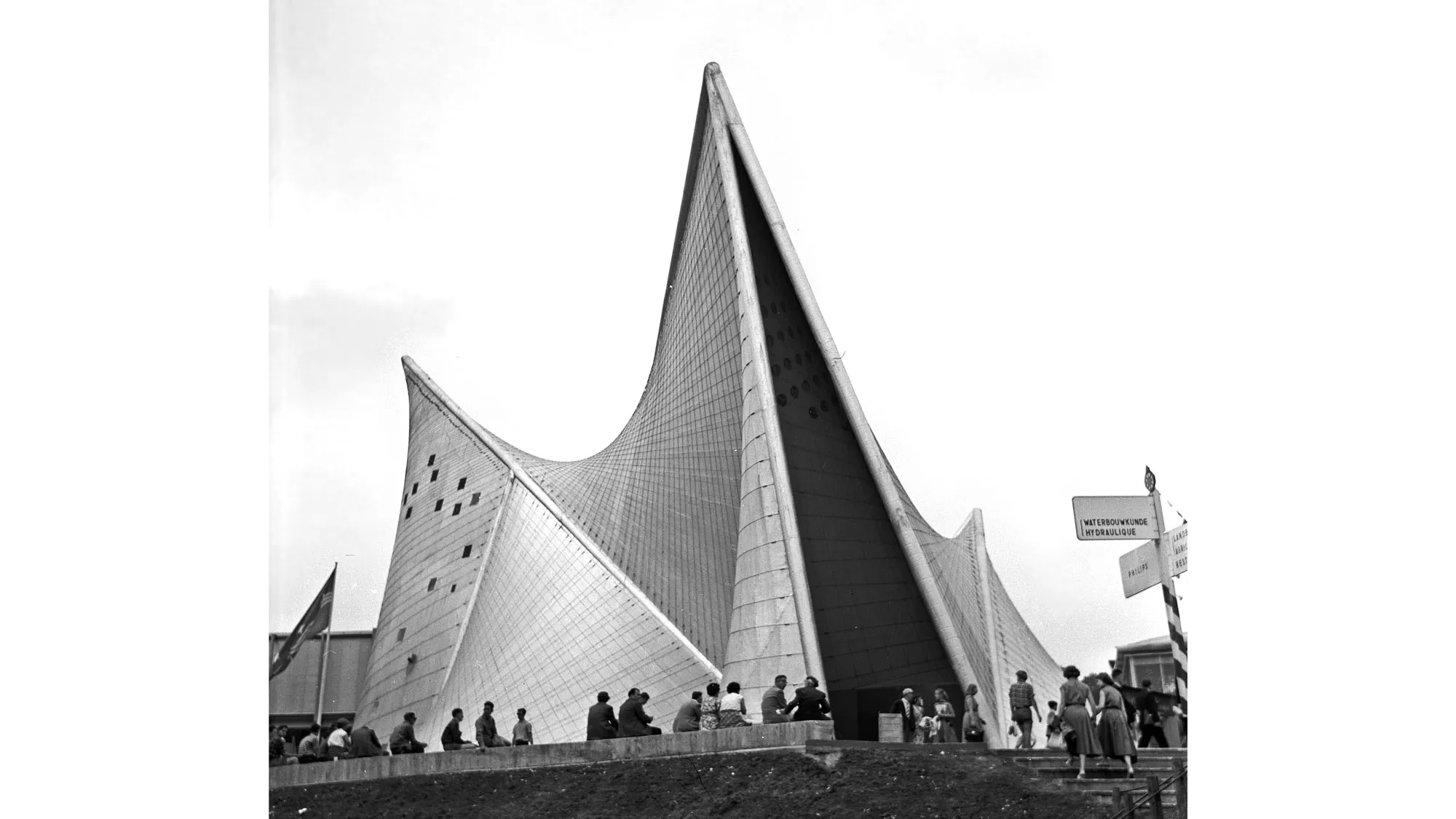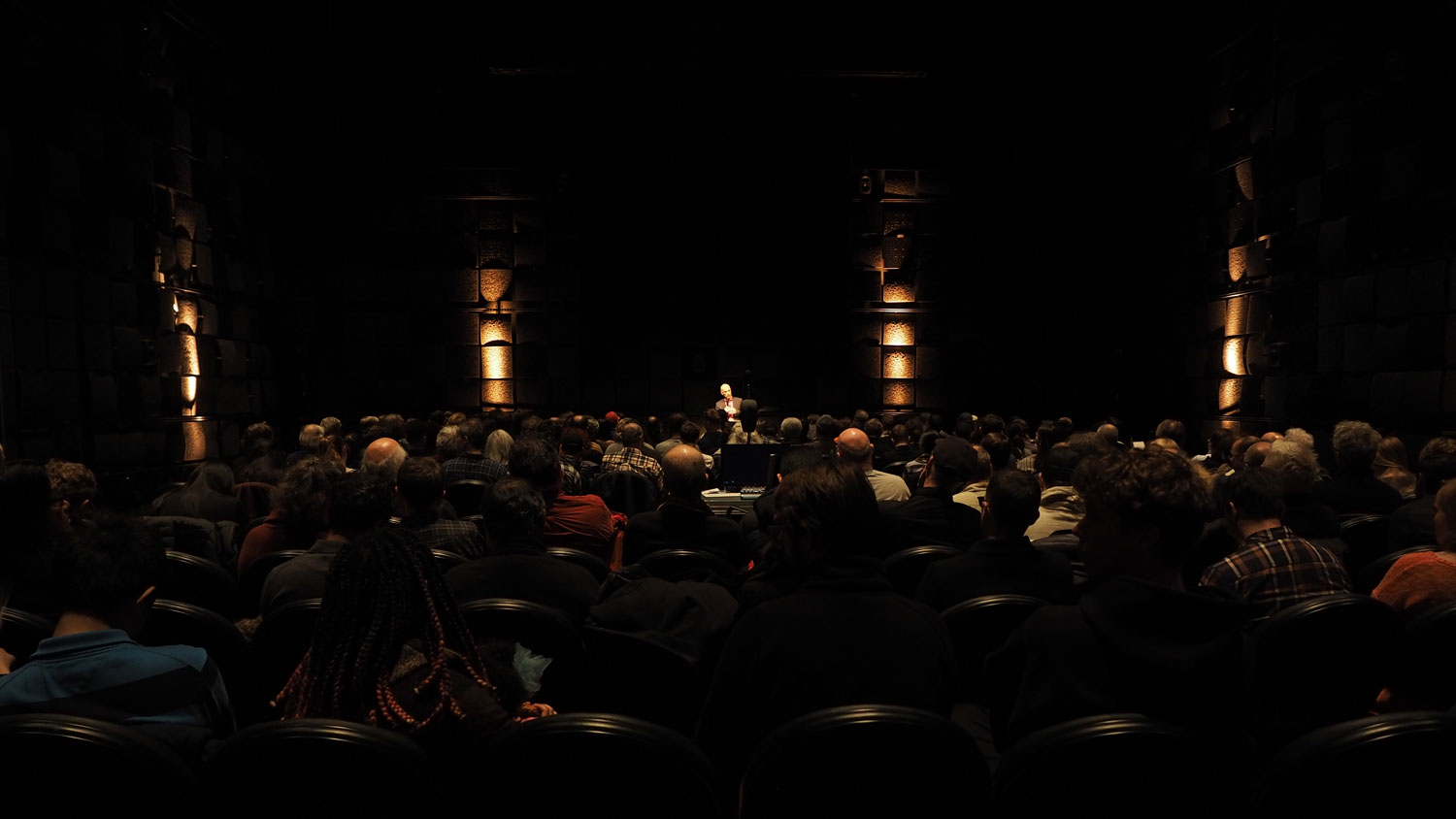
36 Loudspeakers for 2 Ears
The concert this evening will inaugurate a 36-channel “Ambisonic” loudspeaker installation in EMPAC’s large Studio 1. The program will feature a selection of electronic compositions written specifically to reach listeners from all spatial directions. Electronic music composed for loudspeaker systems built around and above the audience has been pursued for over 60 years; since its inception, EMPAC has been creating listening and production environments for sound to move freely through space beyond the confines of traditional stereo or surround-sound systems.
The pieces played during this concert are mostly only available to the public in reduced stereo versions, since there are not many concert halls and performance venues where they can be experienced in full multi-channel sound projection. This concert offers a rare opportunity to listen to this music as it is meant to be heard. The program will include Karlheinz Stockhausen’s Gesang der Jünglinge from the mid 1950s, as well as Edgar Varese’s Poème électronique, which was famously performed in 1958 at the Brussels Worlds Fair over hundreds of loudspeakers in a pavilion designed by the architect Le Corbusier. The very first computer-music work created with “the simulation of moving sound sources,” Turenas by John Chowning (1972), will also be presented, along with newer works from the 21st century offering a wide variety of different musical styles that use loudspeakers as “ensemble.”
The pieces will be performed by Hans Tutschku (Harvard University), who is a composer, performer and teacher of music created for two ears and many loudspeakers.
Main Image: Expo 1958 Philips Pavilion, designed by Le Corbusier and Iannis Xenakis for a multi-media environment with Edgar Varese’s Poème électronique. Edgar Varese composed Poème électronique for the Philips Pavilion, designed by Le Corbusier and Iannis Xenakis, for the Expo 1958 in Brussles. Photo: Wouter Hagnes / Wikipedia.

Hans Tutschku in Studio 1 during 36 Loudspeakers for 2 Ears, March 2019. Photo: Vic Brooks/EMPAC.
Dates + Tickets
Season
EMPAC Spring 2019 presentations, residencies, and commissions are made possible by Rensselaer Polytechnic Institute, with continuous support from the New York State Council for the Arts with the support of Governor Andrew M. Cuomo and the New York State Legislature; the Australian Government through the Australia Council for the Arts; and the Jaffe Fund for Experimental Media and Performing Arts. Additional project support by the National Endowment for the Arts; the New England Foundation for the Arts’ National Dance Project, with funding from the Andrew W. Mellon Foundation; and the Center for Curatorial Studies at Bard College.